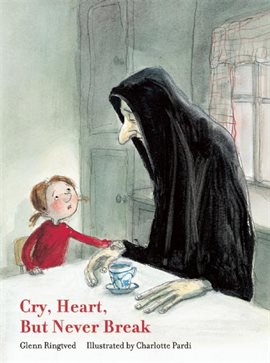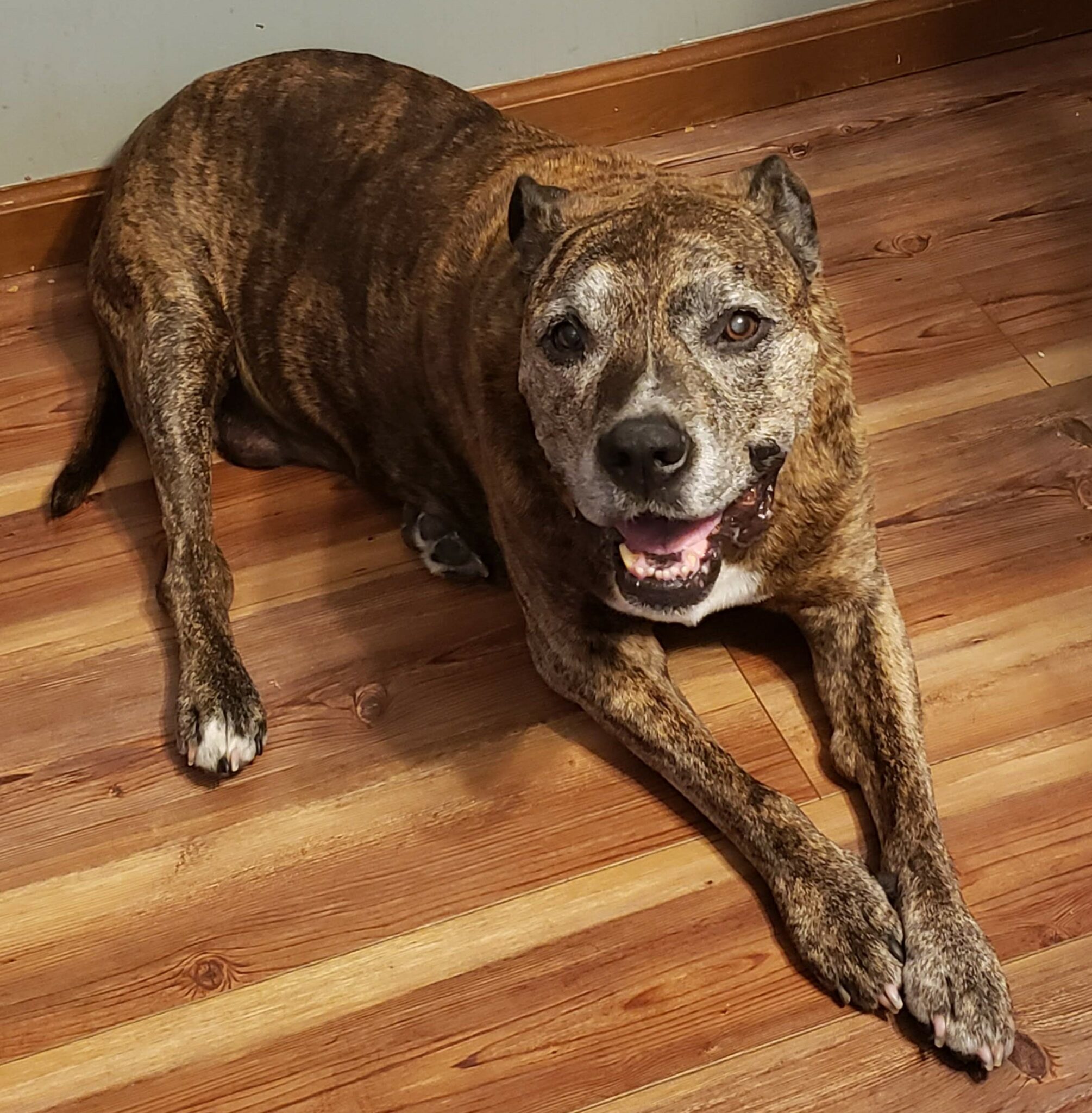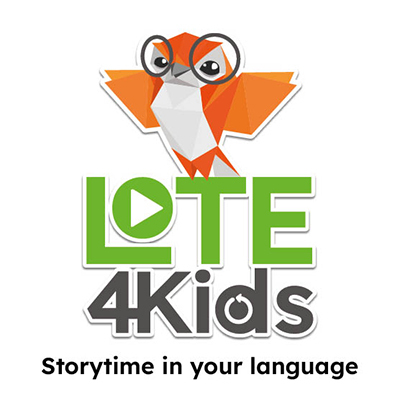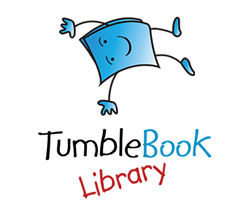It can be absolutely devastating. People who don’t have pets don’t always realize that they are true members of the family. There’s a reason some people call their dogs or cats ‘fur babies.’ But whether they have feathers, fur or scales, they hold a little piece of our hearts. As with any type of grief, when they’re gone, it can feel like that piece they held is forever missing, and you’ll never be whole again. If you have recently (or ever) lost a pet, you aren’t alone in that feeling.
After being my companion for 14 years, I recently lost my dog, Hobbes. Sometimes, the grief feels bigger than I do. As I was reflecting on this feeling, I felt a lot of empathy for children going through the same thing as me. If I, as an adult with many years of learning how to manage my emotions, have struggled with this feeling, I cannot imagine how big it must feel for children.
If you have a child who is struggling with any big emotion like grief, books are a great place to start. Books can give us the words to express what we are feeling. They can help us as adults explain what is going on. Most importantly, they can help us realize that we are not alone. Jessica created an absolutely fantastic book list all about picture books that deal with death, dying, and grief. There are some wonderful titles included about animals specifically, as well as general works about dealing with big feelings. Keep reading for my top picks, both old and new.
Best non-fiction
We have quite a few wonderful nonfiction titles surrounding death and grief. Some of them are centered around pets, others are more general. All of these titles are going to give you a good place to start the discussion with your child about what is happening. Nonfiction can be fantastic for kids who are more logical and want direct age-appropriate explanations of what is happening.
“Life is like the Wind” is one of my favorites for slightly younger kids. This title is fantastic at metaphorically explaining what death is without using too many words. The author compares being alive to the wind. We can see the effects of it and understand when it is there, but once it is gone, everything is still. They follow by giving coping mechanisms for grief and different ways to honor the loved one’s memory. While not specific to pet death, everything said still applies.
While “Life is Like the Wind” is more suitable for young audiences due to the simple wording and length, “When You Have to Say Goodbye: Loving and Letting Go of Your Pet” goes more in depth for kids with a higher attention span. Veterinarian Monica Mansfield describes how important pets can be, the reasons they may pass away, and ways we can feel better after they’re gone. I love how she talks about more than just cats and dogs. Though I am currently grieving my puppy, I have also been in the position of grieving smaller animals. No matter the size or type of animal, they matter just as much, and I appreciate how inclusive this work is.
Once your loved one, human or animal, has passed, then you have to deal with the feelings of loss. That’s where this wonderful title comes in — “Goodbye: A First Conversation About Grief” is a great place to start discussing what grief is and how different people handle it. It emphasizes that different people have different reactions to grief and that there is no right way to grieve. It also addresses the fact that different people have different views of what happens after death. It can be a good way to start that conversation about what you specifically believe. Generally, the First Conversations series is great for giving talking points to both kids and adults. Something as big as grief can feel impossible to discuss with children. But books like these help to break everything down into its individual parts.
Best description of grief
While I do love nonfiction, I connect with stories more than I do facts. If you or your child is the same, the following titles may be more helpful.
Grief can be an incredibly odd feeling, especially if you have never felt it before. It can infiltrate every aspect of your life, even if it seems unrelated to the original loss. Despite having been through grief before, I forgot how intense the feelings can be. After 3 weeks, I remember thinking that it had been too long, and it was time to be done healing now. Unfortunately, grief doesn’t always work on our timeline. The sun will shine again, but it can sometimes take a frustratingly long amount of time. “Pumpkin and Me” by Alicia Acosta is the perfect book to help validate all those feelings and the time that it takes to grow around the loss.
Told from the point of view of a little girl, you follow her journey through grief after losing her dog, Pumpkin. She describes how suddenly there’s a black cloud over everything, even things she used to love to do. She also says it feels like there’s always soap in her eyes, and yet rinsing them out doesn’t help her stop crying. Finally, in one of the best phrases I have ever heard to describe heartache, she talks about the invisible octopus squeezing her heart. While frustrated by these feelings and the duration of them, she eventually finds that thinking about and remembering her friend helps the ache subside.
Best hopeful story
When someone dies, everything can feel rather hopeless. You may question what’s the point of continuing. “An Ordinary Day” by Elena Arnold provides one answer. On the same street, in two different houses, monumental events are occurring. In one, a family is having to say goodbye to their beloved pet golden retriever. In the other, a different family is ready to welcome their newest family member to the world. In both houses, lives are changing. Joy and grief exist simultaneously on this one street. Not only does Arnold create wonderful poetry with her words, but the illustrations are breathtaking. The use of soft, blended colors is such a beautiful way to honor the difficult subject.
Personally, this book gave me a lot of hope. When the going gets rough, it can be difficult to remember that there is beauty and joy in life. Everything can become rather grey. But this book reminded me that not all change is bad. Though a change like the passing of a loved one can be difficult to get through, change can sometimes lead to new beginnings and new sources of hope. As Samwise Gamgee states in “The Lord of the Rings,” “But in the end, it’s only a passing thing, this shadow. Even darkness must pass. A new day will come. And when the sun shines, it’ll shine out all the clearer.” Things may be hard right now. But remember, there is always hope.
Best for beginning to heal
While the worst parts of grief can be at the very beginning, when the wound is most fresh, beginning to heal brings its own struggles. At first, your loved one may be all that you think about. You might anticipate seeing them in their normal spots, hearing the click of their nails on the floor, or feeling their soft fur rub against you. As time goes on, you begin to acclimate to your new normal. There are still days when the wound dominates your mind. But other days, it’s like it’s barely there. This can bring its own struggles. If you’re anything like me, you start to feel guilty about moving on. It can almost become a weird liminal space where life is both okay but also not at the same time. “Angus is Here” by Hadley Dyer is the perfect book for that part of grief.
The main character of this book has never experienced the death of a loved one before. They keep thinking that they see their dog Angus, and yet he’s never really there. They dream about him sleeping in bed with them, but he’s gone when they wake. They even try calling out to him and become frustrated when he doesn’t come. Eventually, they stop seeing him everywhere they go. Then, however, they feel like he would be mad at them for forgetting him. In the end, they learn that no matter how much time passes, he will always be there in their heart.
Best for a cathartic cry
Sometimes, the best thing we can do for ourselves is allow ourselves the space and time to feel. As hard as that may be, in my experience, there is very little as helpful as a good cry. As odd as it sounds though, sometimes our mind can get in the way. Though things are changing, the world doesn’t always encourage open feelings. Our internal protection systems can block out the pain for the sake of keeping us safe. It may not realize that numbing it out can be more harmful than facing it head-on. If you feel like you need to cry but simply cannot for whatever reason, consider reading one of these heart-melting books.
I have never successfully finished “The Longest Letsgoboy” by Derick Wilder without being a teary mess. It is written from the point of view of a dog as he takes his final walk with his best friend. The combination of the dog’s adorable voice (like calling birds “tweeters”) and the subject matter makes it so achingly perfect. The dog only lets go once he realizes that “she will be okay, and I am ready.” You then follow him as he continues to live on in the family’s heart and watch over them from above. While death is hard and sad in this book, it is also somehow beautiful and freeing.
 The same is true in “Cry Heart but Never Break” by Glen Ringtved. Death visits a family of 4 children and their dying grandmother. The children try to trick Death into leaving without their grandmother. Death, wise to their ways, tells them a story about how joy cannot fully exist without sorrow. The same is true of life and death. Death, according to the specter, is not a bad thing, but simply something that gives more meaning to a life well lived. In one of the most beautiful quotes I have ever heard, he tells the children, “Cry, Heart, but never break. Let your tears of grief and sadness help begin new life.”
The same is true in “Cry Heart but Never Break” by Glen Ringtved. Death visits a family of 4 children and their dying grandmother. The children try to trick Death into leaving without their grandmother. Death, wise to their ways, tells them a story about how joy cannot fully exist without sorrow. The same is true of life and death. Death, according to the specter, is not a bad thing, but simply something that gives more meaning to a life well lived. In one of the most beautiful quotes I have ever heard, he tells the children, “Cry, Heart, but never break. Let your tears of grief and sadness help begin new life.”
There are many other wonderful books to help you through this rough time, like “Big Cat, Little Cat,” “Where Lily Isn’t,” and “Saying Goodbye to Lulu”. Regardless of which book helps the most, always remember that you aren’t alone in all of this. Give yourself and your kids grace and love. Even if these books don’t fix everything, I hope they make life at least 1% better. Sometimes, even that is enough.
Dedicated to Hobbes, my forever friend.




